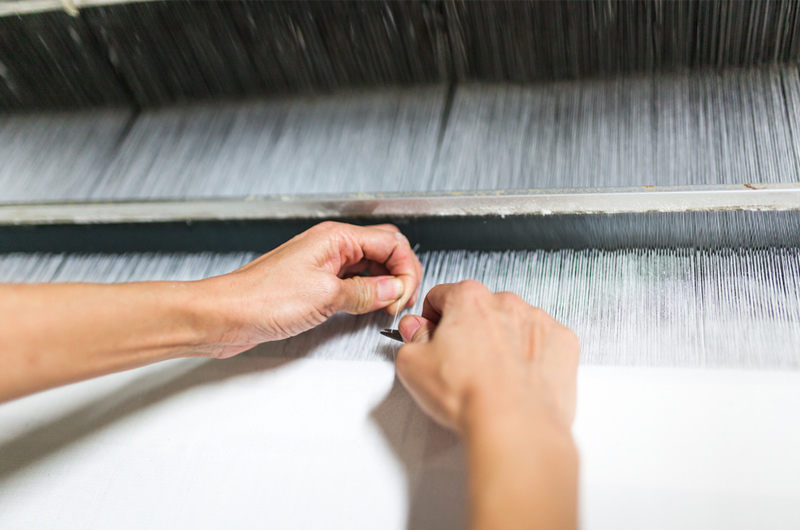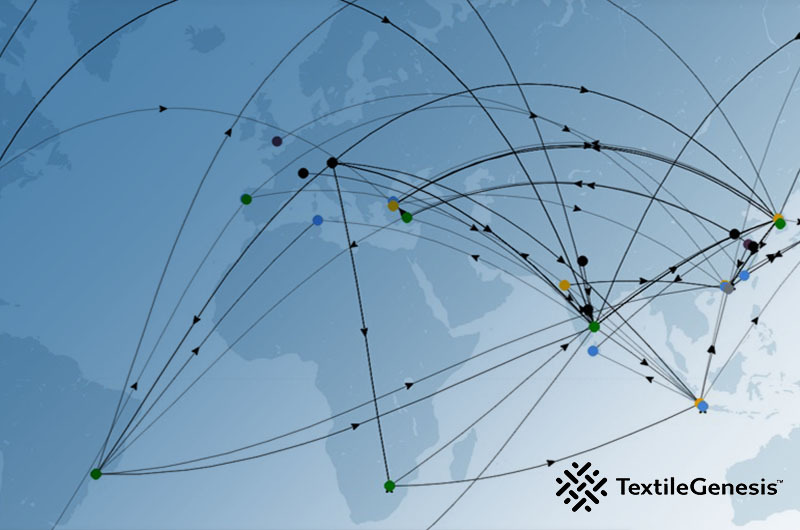Cotton Compact Yarn in the Knitting Mill
Cotton yarns dominate the global market for short-staple yarns, because high-quality products require combed cotton yarns in order to achieve the expected standard of quality. A distinction must be made in this regard between ring yarns and compact yarns. Today, compact yarns account for as much as two thirds of all combed yarns and this ratio will increase. The ratio of compact yarns to ring yarns is growing in carded cotton yarns too, since cotton fibers are particularly easy to compact – the finer the fibers, the better the compacting.
The quality of cotton yarns is largely determined by the different origins of the cotton, the method used to harvest the cotton and how the cotton is processed. There are some very important criteria for the yarn production process that are not always available in the cotton trade:
- Commercial staple
- Short-fiber content as a percentage in relation to a fiber length < 12.7 mm
- Medium staple - Long-fiber content 5%
- Uniformity of the fiber length - Fiber fineness - Trash content
- Stickiness
Many of the fiber characteristic values are connected with the commercial staple. One such value is the short-fiber content (Fig. 1). This affects almost all the important yarn criteria, such as evenness, purity and tenacity.
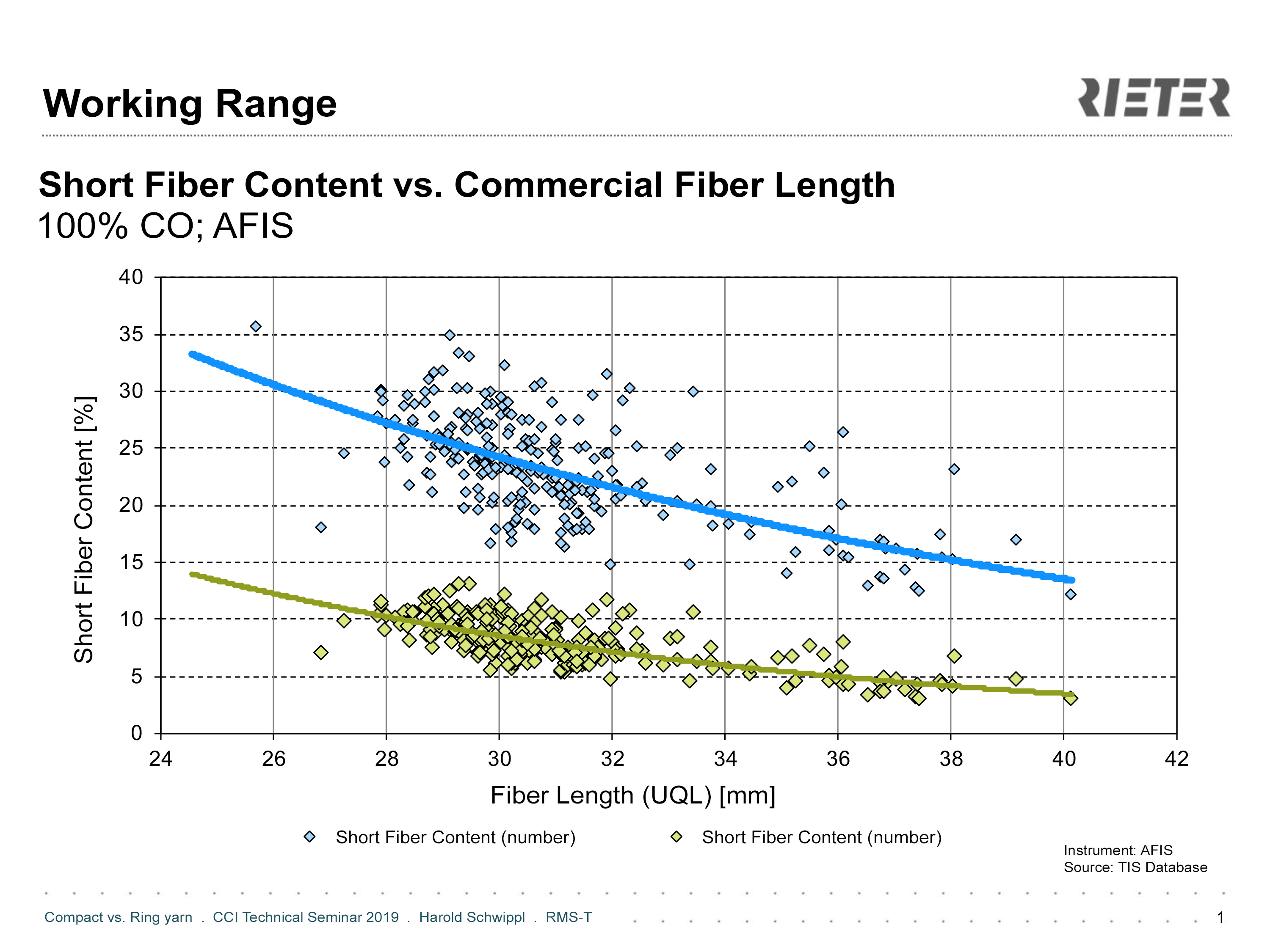
This begs the interesting question: How do the key fiber characteristic values within the same commercial staple range compare for different cotton assortments? There are USTER statistics that already provide very good guide values for this. Seeing a scatter range of fiber characteristic values within a specific time period or a comparison between different origins would give spinning mill operators additional information about the optimal raw material for them to purchase within a commercial staple.
Characteristics of US Cotton
Over the last few decades, Rieter has collected a large amount of data about cotton fibers and used important criteria to examine how US cotton within the same commercial staple compares with cotton of other origins. The statistics are by no means exhaustive. Moreover, this study is retrospective and can change dramatically over time or owing to various environmental influences or changes in the cotton harvest and the subsequent ginning process.
In recent decades, for example, the short-fiber content of cotton fibers in the staple lengths 1 1/16 to 1 1/8 inches has been between 15 and 35%. US cotton exhibits a small scatter range of around 20 to 30% (Fig. 2).
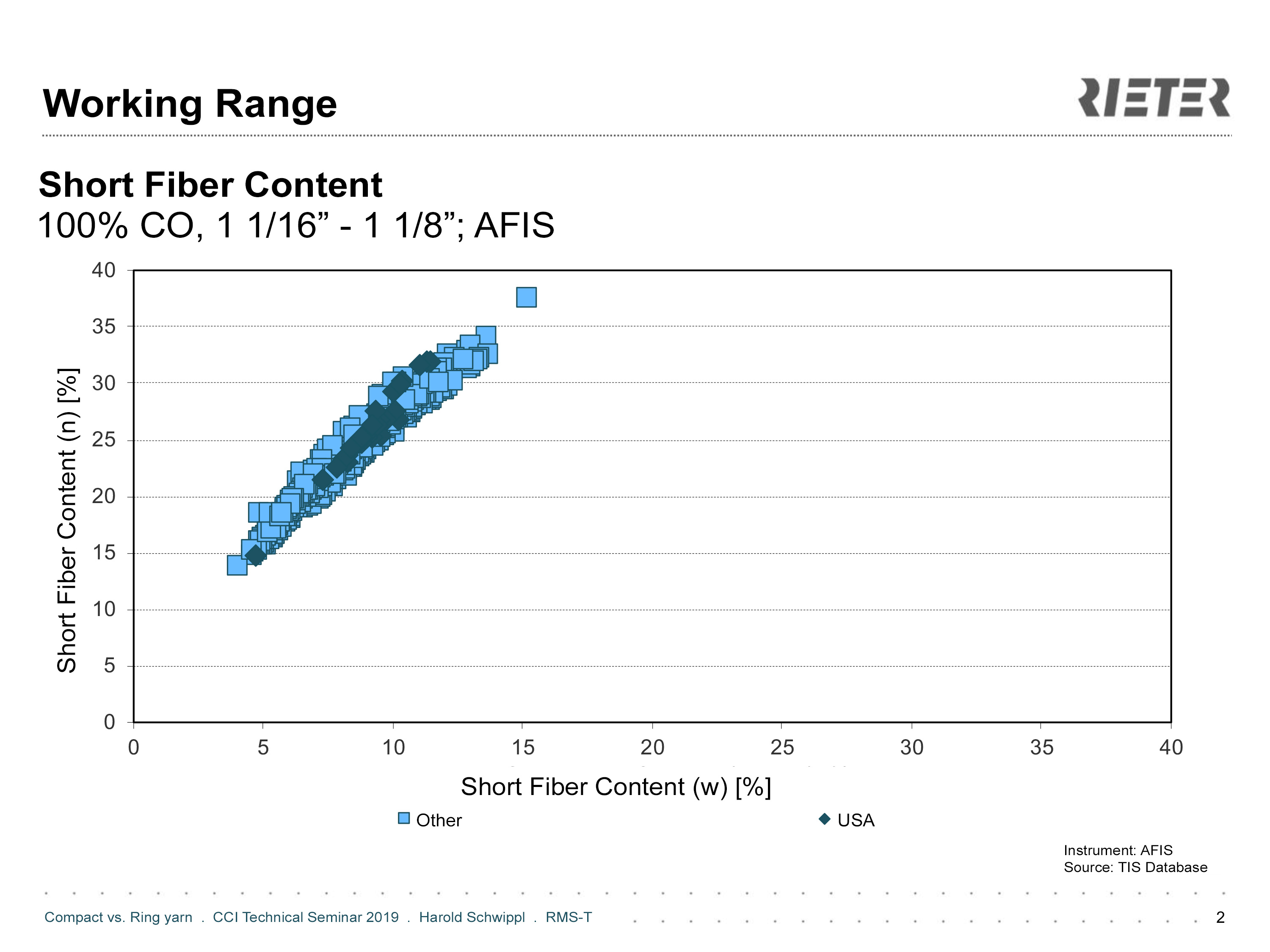
With regard to fiber fineness, US cotton is usually four micronaires, making it the median of the collected data (Fig. 3).
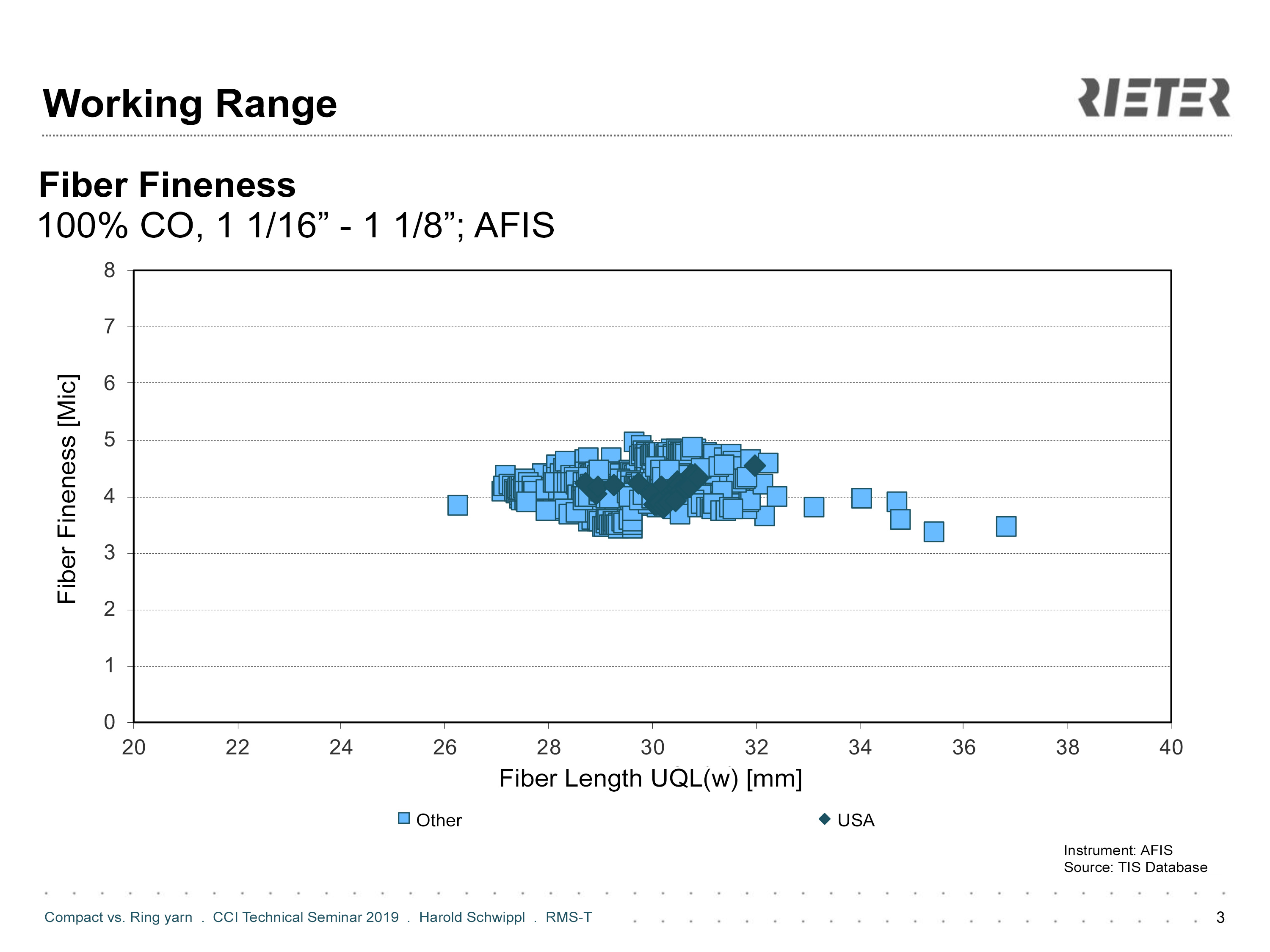
Fiber fineness is an important variable for the spinning stability and the yarn tenacity. The finer the fiber, the higher the number of fibers in the cross section, and consequently the higher the yarn tenacity.
This topic will lead to further investigations in cooperation with CCI, with the aim of giving cotton processors even more assistance with purchasing their raw materials.
The Crucial Difference
Compact spinning is ring spinning plus fiber compacting. In both processes, the roving is fed into a drafting system. The bundle of fibers is drafted and refined, i.e. the fibers are stretched out and parallelized. They are then fed into the compacting device, where – and this is the crucial difference from ring yarn – they are compacted using underpressure. The fiber mesh is compressed. This achieves a greater yarn density with the same yarn count. If the bundle of fibers is fed into the spinning zone, the spinning triangle is considerably smaller than that for ring spinning. This means that almost all of the protruding fiber ends are incorporated into the yarn.
Conclusion: Compact yarns that are spun in this way not only look different than ring yarns in terms of their structure, but they also have a markedly higher tenacity and significantly lower hairiness.
Spinning Mills Benefit in Several Ways
In comparison to ring yarns, combed compact yarns made of cotton exhibit approximately 20% lower hairiness and 17% higher tenacity. These substantial differences have a positive effect on downstream processes and the final product.
In certain applications, however, such as in knitting mills, this high yarn tenacity is not needed. This makes it possible to reduce the yarn twist and therefore increase productivity. However, the pilling vales of the knitted fabric must always be borne in mind. This is the only way to ensure an optimum balance between the quality expectations of the customer and the productivity of the spinning mill.
Other options for utilizing the potential of this spinning technology are using cheaper raw materials or reducing the noil on the comber. With all adjustments, however, there is always enough potential for a good, compacted cotton yarn.
Plus Points in the Knitting Mill
For a long time, weaving mills have preferred to use compact yarn because of its quality and yarn structure. Compact yarn is now the standard yarn for knitting mills too. Its very low hairiness reduces the main problems that knitters experience, namely fiber fly and dust that are produced during the knitting process. When tested on a knitting machine, compact yarns made of cotton fibers produced around 50% less fiber fly than ring yarns. This creates further benefits: fewer faults in the knitted fabric, significantly less needle wear and lower maintenance requirements.
Knitted Fabric with Benefits
The touch of a knitted fabric depends on yarn structure and hairiness. The advantage of compact yarn’s high tenacity can be utilized to produce a knitted fabric that is made of compact yarn and is as soft as possible. It enables the yarn twist to be reduced, thus making the yarn softer and more voluminous. Although this increases the yarn’s hairiness, it is still considerably less hairy than ring yarn. The clear mesh formation and the distinctive structures in colored knitted fabrics or cable-knit items are especially prized. The final product impresses with a lower pilling tendency and continues to look good even after being washed numerous times.
Interesting Options
The latest Rieter technology – the compacting device COMPACTdrum for ring spinning machines – offers all the advantages for compact yarns made of cotton fibers too. It also gives spinners more flexibility, since switching between compact yarn and ring yarn is easy.
Further improvement of the yarn characteristics allows twin yarn to be produced as an alternative to ply yarn. Twin yarn is created directly on the spinning machine. The characteristics of twin yarn are halfway between those of single yarn and those of ply yarn. The hairiness and the characteristics of the knitted fabric can be further improved compared to single yarn, resulting in outstandingly low pilling tendency.
Links:
Rieter: www.rieter.com
COMPACTdrum: www.rieter.com/products/system...
Twin yarn as an interesting option: www.rieter.com/services/expertise-new/textil-technology


